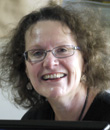
Family and Domestic Violence continues to be a scourge in our community. Culture change seems to be the only solution.
It might be that time of year with the Federal Budget looming, but reports of all kinds have been flying around the office thick and fast and more often than not they’re not telling a happy story, nor even a new one. Take the two recent reports on Family and Domestic Violence (FDV) from WA Health and the Australian Institute of Health and Welfare. They’re sobering when they’re not heartbreaking.
We go into some of the more hideous figures in our By the Numbers column on p13 but it really got us wondering what is being done by those up the chain from the GPs and ED health workers who comfort and patch-up the hundreds of walking wounded. And who help the WA families who, on 19 occasions in 2016, buried women and children who had been murdered by someone close to them.
In 2015, The Australian of the Year Rosie Batty courageously committed herself to open up the national conversation about FDV just a few months after her estranged husband murdered their young son. It proved to be a landmark year for not only conscious-raising but government commitment from the top down.
So in the interest of accountability, here’s what our past prime ministers have had to say about FDV.
- In 2009, PM Kevin Rudd announced a $41.5m strategy to tackle domestic violence. He aimed to ensure that a domestic violence order taken out in one state or territory was automatically registered across the country and threw $3m into the ring to make it so. In 2016 (2017 in the NT) legislation was passed by all state and territory governments – a mere seven years after the drum was sounded – and still it needed a hefty push by PM Tony Abbott in 2015. Money also flowed to a 24/7 crisis line and $9m to a schools program and $17m on a public information campaign.
- In September 2015, PM Tony Abbott said “enough is enough”. The spur for Mr Abbott was the deaths of three Queensland women in the space of just a few days, and he promised to fast-track domestic violence reforms. In the May, he convened a COAG advisory panel to reduce violence against women chaired by Victorian Police Commissioner Ken Lay and Rosie Batty. And $30m went to frontline services.
- In October 2016, PM Malcolm Turnbull described Australia’s domestic violence rates as a “national shame” at the first leaders’ summit to reduce violence against women and children. He outlined his Third Action Plan – $20m for the prevention and early intervention programs; $25m for ATSI services; $15m to improve and expand national domestic and family violence services; $30m for frontline legal services to support women; $10m to respond to ‘revenge porn’ and online abuse.
We can mourn the growing list of lost and damaged lives, we can spew the figures out forever; we can tot up the ledger and shake our head at the money spent. We can also feel overwhelmed and helpless that these things continue to happen in our community despite all of the above.
Shock commentator and former Labor leader Mark Latham was partly right when he said domestic violence was caused by poverty not patriarchy. It’s why so much money has been channelled into social support. But his refusal to acknowledge the part our culture plays in this tragedy is why it will be rerun time and time again.
It’s a strange world where we can quote Tony Abbott without talk of a leadership spill, but his words back in 2015 hold the key:
“My message to everyone – to our brothers, to our sons, to our mates, is: no more. Never, ever again.” But are they listening?

